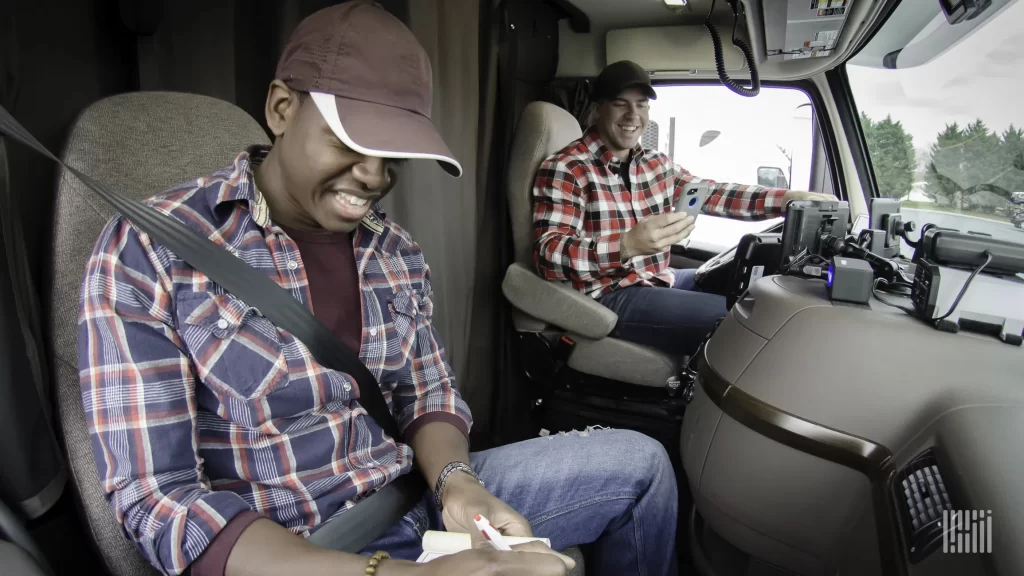March 18, 2022
Trucking 101: Trip planning makes all the difference

Trip planning involves utilizing your time properly to maximize productivity
On paper, trucking is pretty simple: Carry a load from one point to another. But reality isn’t so easy.
For all the obstacles to overcome and hurdles to jump over, the best way to get from point A to point B safely and on time is through proper trip planning.
Reliance Partners Vice President of Safety Brian Runnels and Director of Safety Robert Kaferle have built careers on improving fleet safety and the well-being of drivers. They stress the importance of starting each day with a plan in place.
“It’s probably one of the most important things to know for this job — knowing where you’re going to be, when you’re going to get there and how much time you’ve got left to keep working,” Runnels said.
Drivers switch jobs or leave the industry altogether for numerous reasons; Runnels suggests that poor trip planning may be a factor. He explained that trucking can be overwhelming and confusing at times and that new drivers may become frustrated if they don’t receive the amount of loads that they expected.
But these are often because of misconceptions. The first rule of trip planning is to communicate clearly with dispatch.
Time and time again he’s seen drivers decline loads because of their inability to meet delivery time frames. For that reason, he advises drivers to never turn down a load that seems impossible without first conveying your abilities with dispatch.
“Talk to dispatch and say something like, ‘I can’t have it there by 10 a.m. but I can get it there by 1 p.m. in the afternoon,’” Runnels said. “With capacity being what it is, they’re more than likely going to try to move the delivery appointment to get that load covered.”
The ability to relay to the dispatcher where you’re heading, your arrival time and what’s left of your hours of service goes a long way in building trust, which in turn, may increase the amount of loads offered to the driver, thus earning them more money, Runnels said.
The second rule of trip planning is to calculate your travel time. Kaferle uses a simple trick: Take your travel distance and divide by your average speed.
Using this calculation will help set expectations for yourself, the dispatcher and for your shipper customers.
Say you’ve got to travel 300 miles. When divided by 50, you can expect your trip to take roughly six hours.
But remember to be realistic with your estimates. Though the dispatcher wants the load delivered ASAP, your goal should instead be to get it there as soon as safely possible.
Kaferle said drivers, especially younger ones, often set ambitious goals for themselves. So instead of dividing by 50 miles per hour, they’ll instead use 60, assuming they’ll be speedier. They fail to consider traffic, weather and stops they may take.
“Proper trip planning isn’t just about distance and time, it’s being ready for the unknown,” Kaferle said. “If you’re traveling anywhere in the Midwest, Upper Midwest or in the winter or the Great Lakes around upstate New York and you’re not prepared for ice and snow, then you’re going to be in trouble.”
In addition to checking the weather forecasts each day, it’s also worth studying your routes in detail. Drivers need only to turn to their oldest travel companion: the road atlas.
The third step is to familiarize yourself with the route ahead of you.
It may sound antiquated, but studying maps and a road atlas is a great investment of your time. Runnels strongly suggests this practice as drivers not only learn their routes more intimately but will gain a deeper understanding of road signs, weight requirements, restricted routes, truck stop locations, among other details that GPS doesn’t provide.
However, GPS and web mapping platforms like Google Maps come in handy for researching the closest truck stops to your destination. What’s more, drivers can learn a great deal about the traffic patterns of any city at any particular time. When finding a place to unwind, Runnels suggests using these insights to choose a part of town that will keep you from traffic, as he said there’s nothing worse than having to endure gridlock first thing in the morning.
Runnels doesn’t use maps often these days, but that’s only because the maps are imprinted in his head as he spent his early years carefully analyzing each route.
“Everybody has a gift of some sort in their brain; mine is the ability to remember places and how long it takes you to get there,” he said.
Runnels attributes his trip-planning techniques to his father, describing him as a great planner. Both father and son spent countless hours together on the road as the pair actually received training and ran a team operation during Runnels’ first year in the industry.
Kaferle finds it frustrating that a lot of fleets assume their drivers already know how to plan, assuming their drivers are joining their fleet with prior experience. But he said that trip planning often isn’t addressed during your typical orientation.
He advises those just starting their truck driving careers to take things slow, explaining that it takes about a year or so to figure out what you’re capable of handling as well as discovering your limitations.
It often goes that new drivers develop a healthy fear of the road as they take in the nature of the job, but Kaferle said it doesn’t take long for drivers to gain confidence in their abilities, which is fine but it’s also where some feel comfortable in taking risks.
“When you rush, delivering your load early is the only good thing that can happen, but a lot of bad things can happen too,” Kaferle said.